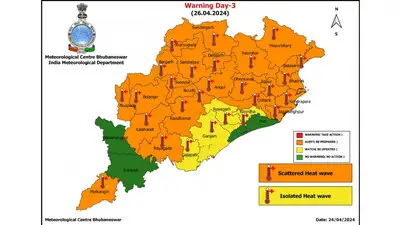Recommended Stories
By Ashutosh Mishra
Bhubaneswar: Odisha government’s exclusive obsession with Chilika, Asia’s largest brackish water lake, has practically sealed the fate of comparatively smaller wetlands which play an equally important role in preserving the state’s rich biodiversity.
The plight of Ansupa, a freshwater lake on the banks of Mahanadi in Cuttack district which is returning back to life after a long struggle for survival, is a case in point. State government’s skewed priorities had become a stumbling block to the revival of the water body that once attracted large flocks of migratory birds and tourists in hordes.
As it is the government woke up to death threat being faced by Ansupa, progressively dehydrated and choked by weeds, quite late. Then experts struggled to come up with a plan for its revival. The suggestions included detailed hydrological monitoring of the lake to evolve a watershed model. Emphasis was also laid on ensuring sustainability of the wetland system by maintaining water quality and updating its bio-logical inventory.
Things are much better in Ansupa now but complete revival of the lake would take some more time. This is just an example of how administrative indifference is playing havoc with an overwhelmingly large number of wetlands crying for attention in the state. Over the years there was so much focus on Chilika, a huge water body straddling three districts of the state, that policy makers practically shut their eyes to the needs of other wetlands.
A land of bewildering biodiversity Odisha is home to 78,440 wetlands, big and small. The majority, which is 66,174 to be precise, fall in the small category, that is wetlands with an area of 2.25 hectares or less. The total coverage of wetlands is 6,90,904 hectares which is a big area even by a conservative estimate.
Since wetlands play a major role in maintaining the carrying capacity of the ecosystems it is imperative for the government not only to save them from extinction but also improve their quality. However, a large number of small wetlands which serve as the breeding ground of native aquatic life and also play host to migratory birds during winter, remain neglected.
The irony is even Chilika, the exclusive obsession of our policy makers, is facing major problems which could have long term repercussions for this internationally acclaimed wetland. While the lake’s eco-system is facing a threat from prawn culture its silt load has been increasingly consistently over the years.
Notwithstanding repeated eviction drives undertaken by the authorities illegal prawn enclosures keep re-appearing in the lake which, experts feel, is becoming shallow. Prawn culture has also spawned violence in the lake area with traditional fisher-folk up in arms against it.
Siltation caused by huge deposits from rivers falling into the lake remains another cause of concern for the authorities as it threatens to alter the quality of lake’s water by choking its mouth where it meets the sea. Though dredging remains an option the less it is resorted to the better. Planners should come up with ideas that can make Chilika more vibrant but they should not forget their duty towards other wetlands of the state which also await attention.
(DISCLAIMER: This is an opinion piece. The views expressed are author’s own and have nothing to do with OTV’s charter or views. OTV does not assume any responsibility or liability for the same.)













